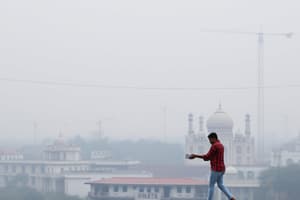Podcast
Questions and Answers
What is the primary focus of macroeconomics?
What is the primary focus of macroeconomics?
- Understanding individual market participants
- Analyzing microeconomic trends
- Studying the economy as a whole (correct)
- Exploring local market dynamics
Which concept provides insights into a nation's economic health in macroeconomics?
Which concept provides insights into a nation's economic health in macroeconomics?
- Consumer spending patterns
- Gross Domestic Product (GDP) (correct)
- Interest rates fluctuations
- Stock market performance
What has fueled India's economic growth according to the World Bank?
What has fueled India's economic growth according to the World Bank?
- A young and increasingly educated workforce (correct)
- An aging and uneducated workforce
- Increased government regulations
- Declining foreign investment
What has been the average annual growth rate of India's GDP from 2005 to 2022?
What has been the average annual growth rate of India's GDP from 2005 to 2022?
What is the primary role of the Reserve Bank of India (RBI) mentioned in the text?
What is the primary role of the Reserve Bank of India (RBI) mentioned in the text?
Which sector contributes the highest percentage to India's GDP according to the text?
Which sector contributes the highest percentage to India's GDP according to the text?
Why is the agricultural sector still considered essential despite its declining contribution to India's economy?
Why is the agricultural sector still considered essential despite its declining contribution to India's economy?
What should India focus on to achieve its goal of becoming a global economic powerhouse according to the text?
What should India focus on to achieve its goal of becoming a global economic powerhouse according to the text?
Which factor underpins India's economic growth, according to the text?
Which factor underpins India's economic growth, according to the text?
In what way do macroeconomic policies help manage India's economic transformation?
In what way do macroeconomic policies help manage India's economic transformation?
Flashcards are hidden until you start studying
Study Notes
Unlocking the Economic Landscape: Macroeconomics and the Indian Economy
Macroeconomics and the Indian economy paint a captivating picture of trade, growth, and social progress. Let's dive into these two interconnected worlds, exploring their interplay and the transformative journey of India's economic rise.
Macroeconomics: A Big-Picture Perspective
Macroeconomics is the big-picture science of understanding the economy as a whole, rather than individual market participants. Key concepts like Gross Domestic Product (GDP), unemployment, and inflation offer insights into the health and direction of a nation's economic health.
Macroeconomists study aggregate demand, supply, and employment to comprehend broader economic trends. They ponder topics such as fiscal and monetary policy, as well as the impact of globalization and technological advancements on the economy as a whole.
The Indian Economy: A Tale of Progress and Challenges
India's economy has evolved from a largely agrarian society into a dynamic and rapidly growing market. According to the World Bank, India's GDP has grown from $1.04 trillion in 2005 to $3.4 trillion in 2022, with an average annual growth rate of 6.8% over this period. This expansion has been fueled by a young and increasingly educated workforce, a growing middle class, and increased foreign investment.
However, this growth has not been without its challenges. India faces issues such as high poverty rates, income inequality, and a lack of basic infrastructure in some regions. Additionally, the economy has been historically vulnerable to global economic shocks and fluctuations.
A Macroeconomic View of India
The Reserve Bank of India (RBI) acts as the country's central bank, maintaining monetary policy to achieve price stability and sustainable economic growth. The Government of India, meanwhile, implements fiscal policy to manage government spending, taxation, and public debt.
India's GDP is primarily driven by the service sector (approximately 53% of the total), followed by industry (24%) and agriculture (13%). The service sector is dominated by financial, professional, and business services, while industry includes manufacturing, construction, and mining. The agricultural sector has seen a gradual decline in its contribution to the economy, but it remains essential for food security and income generation.
The Road Ahead
India's economic future is promising, but challenges remain. The country must continue to invest in education, infrastructure, and sustainable development to achieve its goal of becoming a global economic powerhouse. Macroeconomic policies will play a central role in managing this transformation, balancing economic growth with social and environmental sustainability.
In conclusion, understanding macroeconomics and the Indian economy is essential for grasping the complex dynamics at play in our world. India's economic growth, rooted in its vibrant labor force and increasing role in global trade, offers a unique and exciting perspective in the ever-evolving field of economics. By studying and promoting responsible economic policies, India has the potential to become a beacon of prosperity and social progress for the world community.
Studying That Suits You
Use AI to generate personalized quizzes and flashcards to suit your learning preferences.




